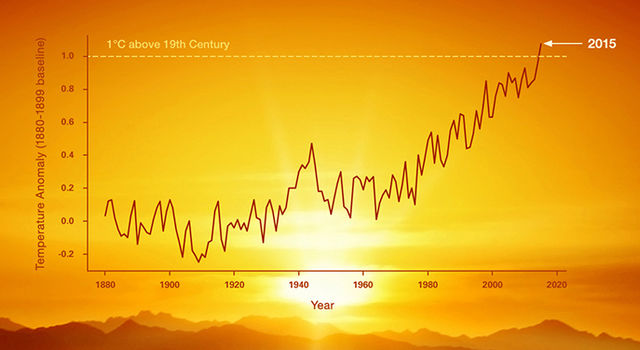How a Math Problem Illustrates Arizona Solar System’s Unique Needs
(Don’t worry, we do the math for you— and it works in your favor!)
Arizona residents and business owners don’t need anyone telling them that Arizona summers are extreme.
If you experienced the massive heat wave that hit the Western U.S. in the summer of 2017, it won’t come as a surprise that year was the warmest year on record for Tucson, Arizona.
In fact, the last four years have been the hottest on record for Tucson since record keeping began. So what does Arizona’s extreme weather have to do with a math problem?
It starts with understanding that solar PV (photovoltaic) systems performance, as an electrical system, is directly impacted by heat. So while all solar panels have an efficiency rating that measures their ability to convert sunlight to electricity, they also have a temperature coefficient that rates how well they perform in high heat.
In the equation (and real life!), the temperature coefficient is the multiplier for estimating how well the solar panel will produce under different temperatures.
You see solar panels are rated in watts similar to a light bulb or other electrical devices. However, the watt rating of solar panels are determined under Standard Test Conditions (STC). Therefore, a 300-watt panel is 300 W DC STC. This implies the panel is receiving 1000 watts of sun per square meter, and that the temperature is 25 degrees Celsius, or 77 degrees Fahrenheit.
Now, if we were to place that panel on a roof in Tucson in mid-July, the output probably wouldn’t really be 300 watts.The same can be said for other regions, but this is particularly important in Arizona because we deal with such high heat in the summers. It’s especially important to be aware of this so you can get optimal solar panel performance in Tucson and Southern Arizona.
So how much should a 300 watt panel produce when it’s over 100° Fahrenheit outside, and closer to 160 degrees Fahrenheit on the panels?
Let’s say the panel is 120 degrees Fahrenheit, or 43 degrees above test conditions levels of 77 degrees F. If the temperature coefficient is -.258, then we would do the following math equation:

In this example, the panel will produce about 257 watts, a significantly different number than just reading the wattage would indicate .
The temperature coefficient is an important piece of the puzzle when considering what solar panels to purchase. And like we said, you don’t have to do the math. Just remember that the lower the number for the temperature coefficient, the better!
Panasonic Solar photovoltaic panels have the world-record best temperature coefficient for solar panels, making them the ideal choice for Southern Arizona solar buyers who want the best return on investment for their system.
Want to know more about how making the right selections for your home or business solar installation can help you get the best return for your money? Call Sunbright Solar at 520-222-9993 for a free expert consultation.
Source: Dan Schippers, March 2019


Recent Comments